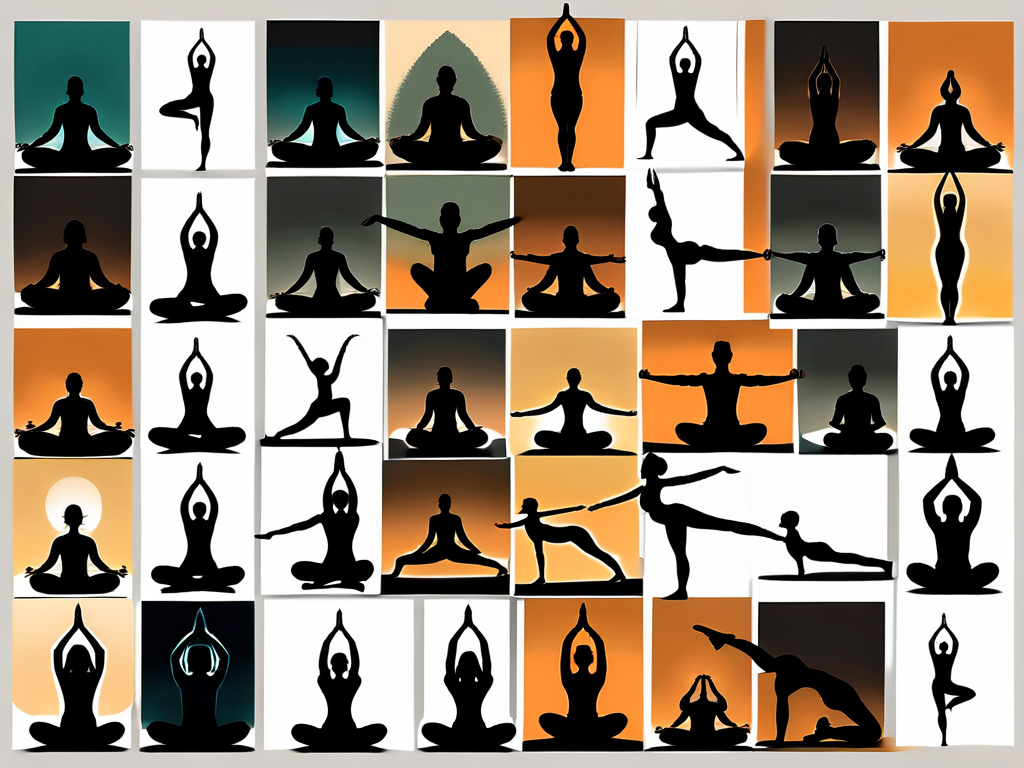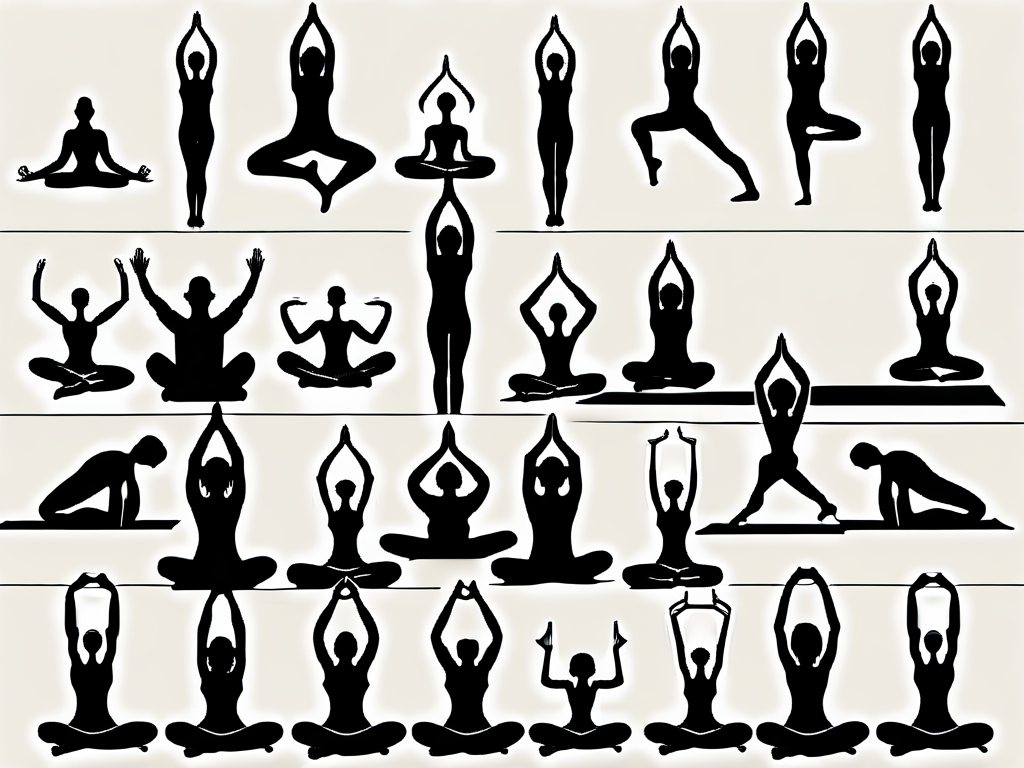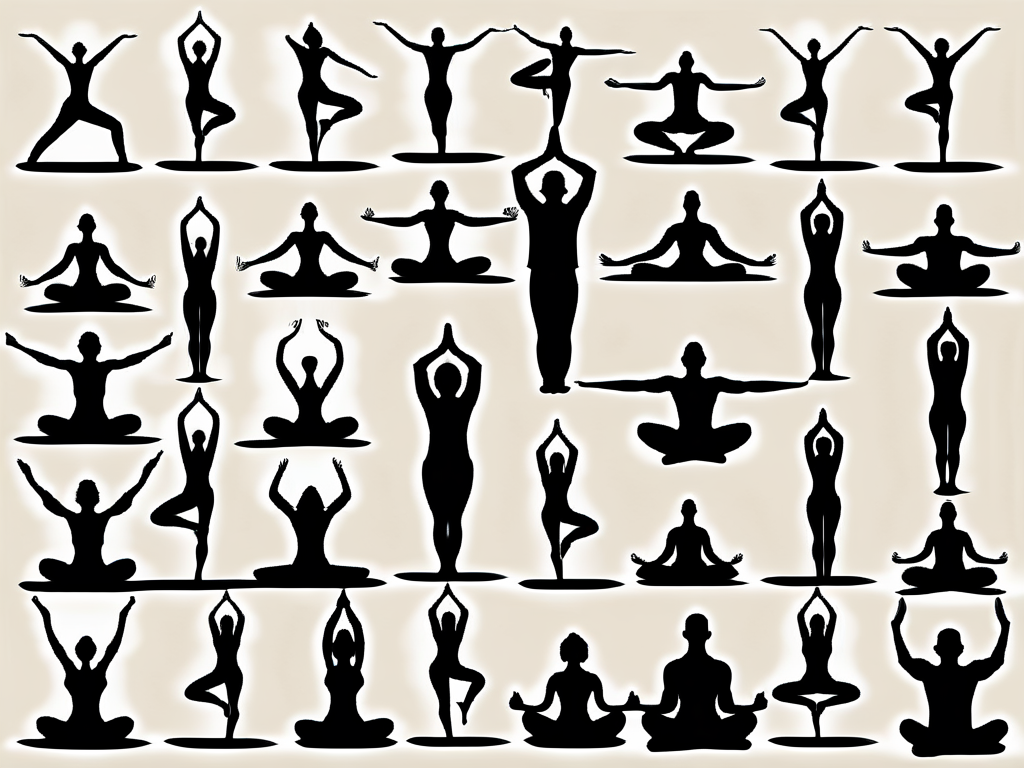In the world of yoga, inversions are a popular practice that involves going upside down or placing the heart above the head. These challenging poses offer a wide range of benefits, from improving circulation to building strength and boosting confidence. However, constantly practicing the same inversions can become monotonous and may even lead to potential risks. That's why it's essential to seek alternatives to your usual inversions. In this article, we will explore 15 different inversions that can add variety and excitement to your yoga practice.
Understanding Inversions
Before we dive into the alternatives, it's important to understand the significance of inversions in yoga. Inversions help to reverse the effects of gravity, allowing fresh blood and oxygen to flow to the head, neck, and face. This increased blood flow brings a plethora of benefits, including improved brain function, enhanced focus, and reduced stress. Inversions also strengthen the core, shoulders, and arms, providing a solid foundation for other yoga poses.

When practicing inversions, it's fascinating to consider the ancient roots of these poses. Inversions have been a part of yoga traditions for centuries, with their origins deeply intertwined with the quest for spiritual enlightenment and physical well-being. The act of inverting the body was believed to bring practitioners closer to the divine, fostering a sense of connection with the universe and promoting inner harmony.
The Role of Inversions in Yoga
In the practice of yoga, inversions are considered to be powerful and transformative poses. They help us develop a different perspective, both physically and mentally. Inversions challenge our balance and stability, encouraging us to let go of fear and find our inner strength. Additionally, inversions stimulate the lymphatic system, which plays a vital role in detoxification and immune function.
Exploring the world of inversions opens up a realm of possibilities for personal growth and self-discovery. As you navigate through different inversion poses, you may uncover hidden fears, insecurities, or limitations that you can work through on the mat. Embracing the discomfort and uncertainty that come with inversions can lead to profound breakthroughs in your practice and in your life beyond the yoga studio.
Commonly Practiced Inversions
Some commonly practiced inversions include headstand, handstand, shoulder stand, and forearm stand. While these poses certainly have their benefits, it's important not to get stuck in a repetitive practice. By exploring alternative inversions, you can continue to challenge yourself, learn something new, and keep your practice exciting.
Each inversion offers a unique set of physical and mental challenges, inviting you to step out of your comfort zone and expand your boundaries. Whether you're working on building strength, improving flexibility, or cultivating a sense of inner peace, there is always something new to discover in the world of inversions. Embrace the journey, trust the process, and let the wisdom of inversions guide you towards a deeper understanding of yourself and your practice.
Why Seek Alternatives to Usual Inversions?
While traditional inversions are undoubtedly beneficial, there are several reasons why you might want to incorporate alternatives into your practice.

The Need for Variation in Practice
Repeating the same inversions day after day can lead to a plateau in your practice. When you challenge your body with new poses, you keep your muscles guessing and continuously progress in your yoga journey. Alternative inversions provide an opportunity to explore different movements, angles, and sensations, helping to keep your practice fresh and invigorating.
Potential Risks of Repetitive Inversions
Practicing the same inversions repeatedly can also have its drawbacks. Overdoing inversions can put excessive strain on the neck, shoulders, and wrists, potentially leading to injuries. By incorporating alternative inversions that engage different muscle groups, you can prevent overuse and distribute the workload more evenly throughout your body.
Exploring the 15 Alternatives
Alternative 1: Downward Dog Variation
Start in a traditional downward dog pose and lift one leg up towards the sky. Press the hands firmly into the mat and engage the core as you lift the opposite leg higher. Hold for a few deep breaths, then switch sides. This variation helps to build upper body strength and improve balance.

Alternative 2: Crow Pose Variation
Instead of attempting a full crow pose, try placing a block under your forehead and resting your knees on the backs of your upper arms. This modified version helps to develop arm and core strength while allowing you to focus on balance and alignment.
Alternative 3: Headstand Variation
If traditional headstand feels too intense, try using a wall for support. Place your head and forearms on the mat, then walk your feet up the wall until your body is in a vertical position. This modification allows you to experience the benefits of a headstand while reducing strain on the neck.
Alternative 4: Handstand Variation
Similar to the headstand variation, you can practice a handstand with the support of a wall. Place your hands shoulder-width apart on the mat, kick one leg up, and use the wall to help you balance. As you become more comfortable, you can gradually move away from the wall and work on finding balance independently.
Alternative 5: Forearm Stand Variation
For those who find forearm stands challenging, a variation using a block can be helpful. Place a block at its lowest height under your head, then rest your forearms on the mat. From there, walk your feet up the wall and engage your core to lift your legs off the ground. This variation allows you to build strength gradually and work on proper alignment.
Alternative 6: Shoulder Stand Variation
If shoulder stand feels too intense for your neck, try practicing this inversion with a blanket or bolster under your shoulders. This modification provides extra support and reduces strain on the neck while still offering the benefits of the pose.
Alternative 7: Bridge Pose Variation
Incorporate a variation of bridge pose by using a yoga block. Lie on your back and place a block under your sacrum, then press into your feet and lift your hips. The block provides support and allows you to hold the pose longer, helping to open the chest and stretch the shoulders.
Alternative 8: Wheel Pose Variation
For a modified version of wheel pose, place your hands on blocks instead of reaching back to touch the mat. This variation helps to build strength in the arms, shoulders, and back while allowing you to focus on proper alignment.
Alternative 9: Plow Pose Variation
If plow pose is challenging for your neck or hamstrings, try practicing it with your feet on a wall. Lie down with your legs extended up the wall and flex your feet. Slowly lower your legs toward your face, using the wall to support your weight and provide a gentle stretch.
Alternative 10: Legs-Up-The-Wall Variation
Legs-up-the-wall pose is a gentle inversion that offers many benefits, including relaxation and improved circulation. To add a variation, try placing a rolled-up blanket under your hips for extra support and comfort.
Alternative 11: Dolphin Pose Variation
Instead of practicing headstand or forearm stand, explore dolphin pose. Start on your hands and knees, then lower your forearms to the mat. Engage your core and lift your hips, creating an inverted "V" shape with your body. This variation helps to build upper body strength and prepare the shoulders for more advanced inversions.
Alternative 12: Camel Pose Variation
Camel pose is a heart-opening posture that provides a gentle inversion by placing the head below the heart. Instead of reaching back to grab the heels, try placing blocks on either side of your feet and rest your hands on the blocks. This modification allows you to find a comfortable stretch in the chest and shoulders while maintaining proper alignment.
Alternative 13: Fish Pose Variation
Fish pose is another heart-opening pose that can be challenging for some. To explore a variation, try using a yoga wheel or a bolster to support your upper back. Place the prop under your shoulder blades and relax into the stretch, allowing the chest to open and the breath to deepen.
Alternative 14: Lizard Pose Variation
Lizard pose is a great way to stretch the hips and groin. For a gentle inversion, try lowering your forearms to the mat and resting your chest on a block or bolster. This variation allows gravity to assist in deepening the stretch and creates a sense of release and surrender.
Alternative 15: Pigeon Pose Variation
Pigeon pose is a deep hip opener that can be modified to incorporate an inversion. Start in pigeon pose with your front knee bent and your back leg extended behind you. Slowly lower your upper body forward, bringing your forehead towards the mat. This variation provides a gentle stretch for the hips while offering the benefits of an inversion.
By incorporating these 15 alternatives into your yoga practice, you can continue to reap the benefits of inversions while keeping your practice fresh and exciting. Remember to approach each pose with mindfulness and respect for your body's limitations. With time and practice, you will discover new depths to your yoga practice and experience the transformative power of inversions.




